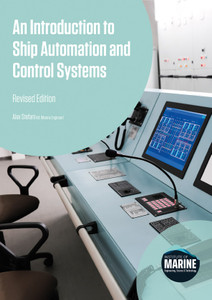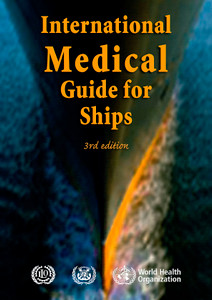
This third edition of a three-part book on diesel engines is intended for all who work with diesel engines for maritime propulsion and power generation:
- Maritime training institutes and maritime universities
- maintenance and reconditioning companies
- shipping companies deep-sea, inland, towage, dredging and heavy-load cargo
- insurance companies, classification bureaus, surveyors
- shipping industry suppliers, suppliers of engine parts, fuel and lubricating oil
- engine manufacturers and dealers
- power plants.
The three volumes consist of Book I Principles, Book II Engine systems and environment and Book III Operation and maintenance.
When compiling this book, a practical approach was chosen using ample authentic graphic material with detailed explanations allowing the reader to gather pertinent information without laboriously going through the main text.
Important subjects: common-rail systems, emissions, materials, casting and forging of parts, vibrations, propellers, fuel problems, dual-fuel engines, reconditioning, regulations for testing diesel engines.
Leading companies and institutes have contributed to the realisation of this book by providing information, photographs and interviews.
Ninety per cent of the more than 2700 pictures are in colour.
Read product reviews for both this title and the TGET title focusing on Gas Engines by visiting the author’s website.
The internal combustion engine is still the preferred driving mechanism and will continue to be so in the future. Experts do not anticipate an effective replacement before 2050. There have always been 'inventors' and they will continue to develop and improve the principle, thus increasing efficiency and decreasing noxious emissions. This is often no easy matter and from an economic point of view, usually not very interesting.
Today (2017) fuel consumption and therefore engine efficiency and emission levels play an important role in the use of internal combustion engines encompassing gas-, dual-fuel- and diesel engines. Engine efficiency has greatly improved since 1867, August Otto, and 1897, Rudolf Diesel, with today's efficiencies ranging from 45 to 52% for engines in categories III and IV.
Noxious emissions levels, to the environment, where man is a part of, are becoming increasingly restricted.
The use of liquid fuels such as heavy oil and diesel oil is more sophisticated; the cleaning of exhaust gases is increasingly being applied.
Since the discovery of natural gas in the 20th century, the gas engine, widely used since its introduction in 1867, is being constantly developed.
Modern gas engines are generally used in cogeneration, where both electricity and heat are generated. The combined heat and power efficiency can attain 95%.
In recent years, gas engines have gained awareness. In addition to the above mentioned cogeneration, which has been applied for many years, electricity generating land installations are increasingly being employed.
There are also many pilot projects in shipping in which propulsion engine- and gas-engine gensets operate according to the Otto-principle and the Diesel-principle.
The Otto-cycle in these gensets uses 100% gaseous fuel whereas the Diesel-cycle uses up to 99% gaseous fuel and a small amount of liquid fuel for ignition. The latter principle, the dual-fuel system, can also run on 100% liquid fuel. It is for this reason that this system is often employed for shipping.
The great advantage of gas engines are the relatively low emissions of harmful substances, which means that these engine types can also meet increasingly stringent emission regulations now and in the future. Techniques currently improving these characteristics are: common-rail systems, two-stage turbocharging and Miller timing.
It is evident that any development in internal combustion engines progresses slowly.
Successes are obtained mostly by trial and error. However, there is one given: at present there is no alternative for the internal combustion engine, nor will there be for the next 25 years.
This third edition is introduced to the market at a point in time when world economy has not yet recovered from the worldwide crisis which became visible in 2008.
A crisis also in shipping and shipping related business. In general there is overcapacity of existing freight volume, resulting in a still dramatic depth of the freight prices.
Also in the world of oil and gas, the offshore industry and in dredging, activities have dropped to a very low level.
Everywhere in the above-mentioned branches of industry, attempts are made to keep the cost of production as low as possible.
This holds also true for technical installations such as diesel engines.
The running costs among which the consumption of fuel and lubricating oil, regular maintenance and periodic turns in drydock often make up 70% of a vessel?s running costs and the same holds true for diesel power plants (docking costs excepted). So in the long run optimal servicing and maintenance of diesel engines is of utmost importance to keep the average expenditure relatively low.
Breakdown of diesel engines and related installations often results in much higher expenditure! In this third edition as well much attention is paid to the daily practice besides the underlying theory.
New subjects are:
- A new chapter 'Endoscopy and measurements'.
- Lubricating-oil analysis for gas, dual-fuel- and diesel engines.
- Two-stage turbocharging.
- Latest design development Wärtsilä X two-stroke crosshead engines 60-95 bore.
- MAN B&W new design Mk 10 two-stroke crosshead engines.
- Extension speed control.
- Slow steaming.
- New information about engine manufacturers.
- Emissions, current SECA and future NECA regulations.
- Scrubbers and selected catalytic reduction systems.
- Particulate matter.
- An improvement to both to the many images and the text.
This book is intended as a reference guide for all those who, for whatever reason, come into contact with diesel engines. The book Gas-and dual-fuel engines for ship propulsion, power plants and cogeneration is available since April 2016. See our website.
Kees Kuiken, Onnen, May, 2017
Book I: Principles
1. The use of industrial diesel engines
2. Classification of diesel engines
3. Working principles of diesel engines
4. Efficiency and losses of diesel engines
5. Standard figures of various types of diesel engines
6. Construction of various types of diesel engines
7. Driving gears
8. Fuel, fuel-line systems and fuel cleaning
9. Fuel-injection systems
10. Calculating fuel- and lubricating- oil consumption
11. New fuel developments
12. Speed control
13. Diesel engine starting systems
14. Engine noise: origin and damping
15. Vibration and balancing
Book II: Engine systems and environment
16. Air Supply
17. Cooling of gas-, dual-fuel- and diesel engines
18. Lubrication of engines
19. Endoscopy and measurements
20. Diesel-Power Plants
21. Operational management and automation
22. Auxiliary systems: fuel- and lubricating-oil separators
23. Transmission gears, flexible couplings, vibration dampers, shafting and shaft generator drives
24. Emissions in gas-, dual-fuel- and diesel engines
25. Bedplates and engine alignments, gearboxes, shafts, propeller shafts and generators
Book III: Operation and Maintenance
26. Diesel-engine manufacturers
27. Ship propulsion
28. Propellers
29. Use of materials for diesel engines
30. Casting, forging and welding engine parts
31. Reconditioning engines and their parts
32. Maintenance and repairs
33. Regulations for propulsion engines, classification, repair and damage
Kees Kuiken started his career in 1963 by enrolling as a marine engineering student at the Maritime Institute at Terschelling, The Netherlands.
After graduation, he joined the United Dutch Shipping Company (Verenigde Nederlandse Scheepvaartmaatschappij, VNS).
In 1978, he went on to become a lecturer in marine engineering at the Maritime Academy at Delfzijl and Groningen, and also worked in the mechanical engineering- and operational technology departments. He was passionate about building a large and advanced practical lab for both intermediate and higher maritime education, as well as for trade and industry.
In 1995 he founded the European Training centre for Machine technology, ETM, an educational foundation.
In 2000, he left regular teaching and established Target Global Energy Training.
The company conducts training sessions worldwide in diesel- and gas engine technologies, gas- and steam turbines, compressors and cogeneration.
Furthermore, Target provides solutions for a myriad of technical problems and publishes books and manuals.
- Number of Pages:
- 1376
- Published Date:
- September 2024
- Book Height:
- 0 mm
- Book Width:
- 0 mm
- Publication Date:
- September 2024
- Author:
Kees Kuiken
- Preview:
- Yes






